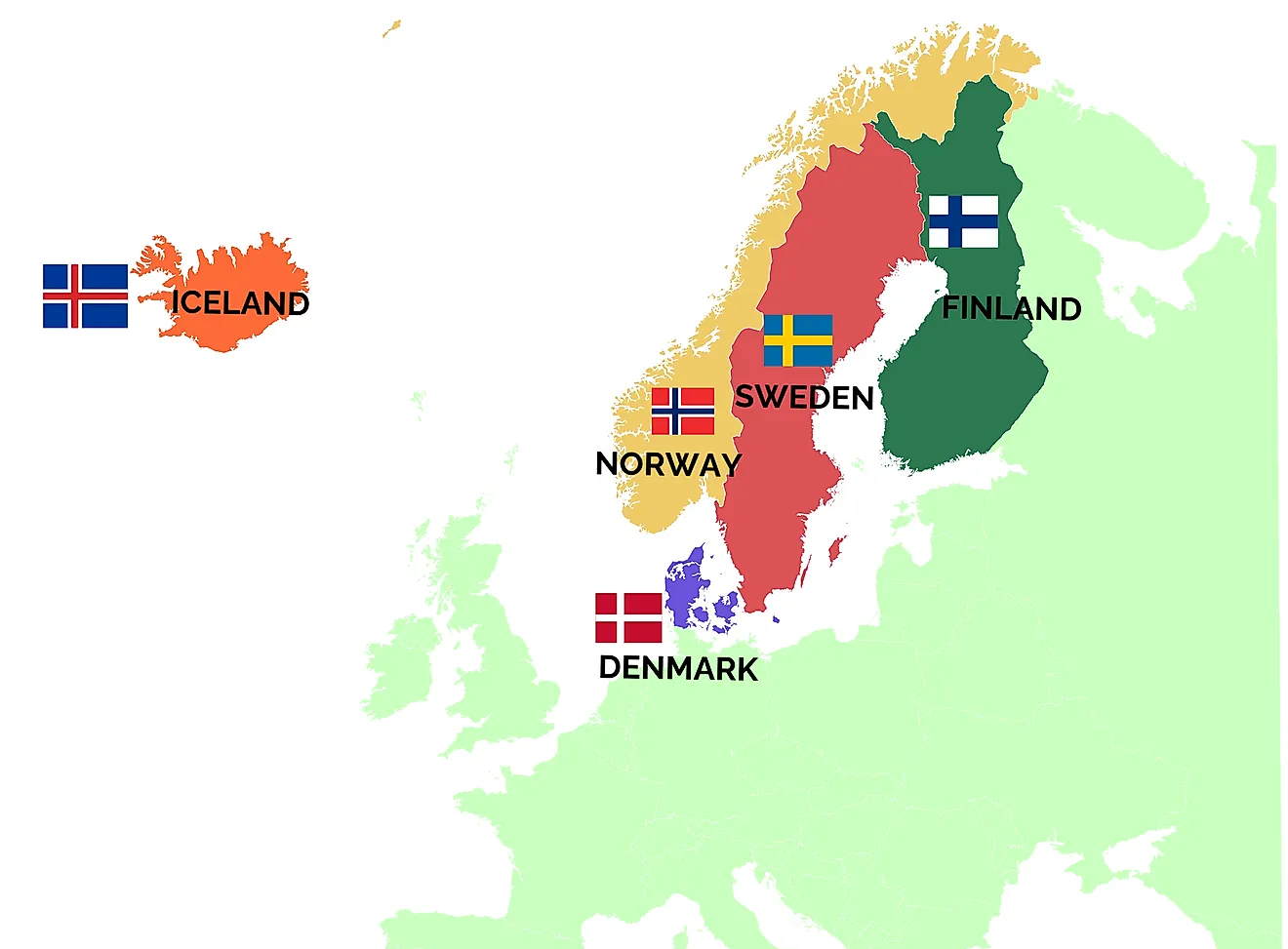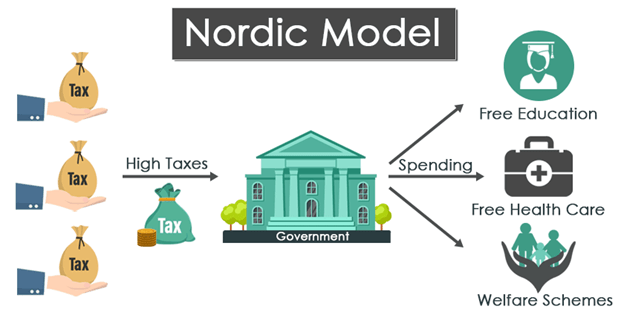Nordic Model of Social Democracy | 20 Sep 2022
For Prelims: Challenges with the Nordic Model of Social Democracy, Social Democracy, Nordic Countries.
For Mains: Nordic Model of Social Democracy, its advantages and Disadvantages.
Why in News?
In Sweden the new right-wing government is about to form, which threatens the Nordic (Also Scandinavian) Model of Social Democracy.
- Sweden’s right-wing coalition led by Moderate Party has defeated the centre-left bloc coalition led by Social Democrats Party, which notwithstanding remained the single largest party.
- Sweden, Norway, Finland, Denmark, and Iceland, collectively known as the Nordic countries.
What is the Nordic Model of Democracy?
- The Nordic model refers to the standards followed in Sweden, Norway, Finland, Denmark, and Iceland. These nations are known for high living standards and low-income disparity.
- The model is a unique combination of Free-Market Capitalism and Social Welfare.
- An economic system that is based on supply and demand is known as the Free Market.
- Social Benefits are funded by taxpayers and administered by the government for the benefit of all citizens.
- It is a mixed economic system that reduces the gap between the rich and the poor through redistributive taxation and a robust public sector while preserving the benefits of capitalism.
- Gender equality is a hallmark trait of the culture that results in not only a high degree of workplace participation by women but also a high level of parental engagement by men.
What Makes the Nordic Model Work?
- A combination of shared history and societal development is credited with much of its success.
- Unlike areas that developed around the formation of large corporate-owned farms, the history of this part of the world is largely one of family-driven agriculture.
- The result is a nation of small entrepreneurial enterprises directed by citizens facing the same set of challenges. Solutions that benefit one member of society are likely to benefit all members.
- This collective mentality results in a citizenry that trusts its government because the government is led by citizens seeking to create programs that benefit everyone.
- The result is publicly funded services, such as healthcare and education, are of such high quality that private enterprises have no reason to offer these services or room to improve them. This mindset remained intact as capitalist enterprises developed.
What are the Advantages and Disadvantages?
- Advantage:
- The Nordic model yields equality and social mobility.
- Everyone has free access to decent public services, including some of the best education and healthcare in the world, and people appear happy to pay their taxes to make sure that this continues.
- These collective benefits are merged with entrepreneurship, creating an efficient blend of capitalism and socialism (Cuddly Capitalism).
- Disadvantage:
- The model is criticized, because of the high taxes, high degree of government intervention, and relatively low Gross Domestic Product (GDP) and productivity, limit economic growth.
- The Nordic model redistributes assets, limits the amount of money available for personal spending and consumption, and encourages reliance on government-subsidized programs.
What are the Challenges to this Model?
- Aging Populations:
- In terms of an aging population, a large base of young taxpayers and a smaller population of older residents receiving services are the ideal scenario. As the population balance shifts the other way, benefit reductions are a likely outcome.
- Immigration:
- In terms of immigration, these countries attract a notable influx of newcomers seeking to enjoy generous public benefits. These new arrivals often come from nations that do not have a long, shared history of making decisions on behalf of the common good.
- New arrivals can present a significant burden to the system and could, ultimately, result in its demise.
Way Forward
- There are fears that an aging population, globalization, and growing immigration will gradually tear apart the efficient welfare state of the Nordic model.
- Taxes can only increase so far, and there is always the risk that a more individualistic culture will begin to evolve.
- The Nordic model has a habit of overcoming obstacles better than many critics have expected. There are reasons to believe that the basic values behind it are so ingrained in these countries that they will always exist in one form or another.


